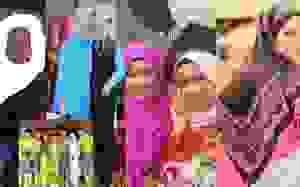Our Elderly Need Smarter Care Not Just More Beds

Letter to Editor
EVERY hour, one older Malaysian is hospitalised because of a fall. These incidents aren’t just common, but they’re costly, traumatic, and often entirely preventable.
As Malaysia moves toward becoming an aged nation by 2030, falls have quietly become one of the most serious and under-addressed public health risks for our seniors.
As a biomedical engineering student working on sensor-based monitoring systems, I believe we already have the tools to address this if we’re willing to rethink how we provide eldercare.
It’s time to move beyond traditional caregiving models and embrace proactive technologies that can detect, prevent, and respond to falls before they happen.
Malaysia’s ageing nation challenge
Malaysia is undergoing a major demographic shift. A country is classified as an “ageing nation” when 7% of its population is aged 65 or older.
We reached that point in 2020. By 2030, more than 15% of Malaysians will fall into this category, officially making us an “aged nation”.
This shift isn’t just about numbers, it has deep implications for healthcare, the economy, and social structures.
A growing elderly population means more demand for medical care, chronic disease management, and long-term support. It also means more people living with reduced mobility, cognitive decline, and vulnerability to accidents particularly falls.
Yet our infrastructure, staffing, and public health systems are not keeping pace with these changes.
With urban migration and smaller family sizes, many elderly individuals are now living alone or with limited assistance. In lower-income households and rural areas, there may be no one available to respond quickly when a fall occurs.
The result? Older Malaysians lie injured, alone, and afraid sometimes for hours before help arrives. Despite these sobering realities, fall prevention remains largely invisible in national conversations on eldercare.
A simple innovation idea with real-world impact
As part of a problem-based learning (PBL) initiative in my biomedical engineering program, my team and I proposed a sensor-based fall detection and prevention system tailored for local care home environments.
The system incorporates motion detectors, pressure-sensitive mats, and simple analytics to track daily movement patterns. It flags unusual activity like prolonged inactivity or nighttime wandering and sends real-time alerts to caregivers via mobile notifications.
The goal is simple but powerful: early detection and faster response. In many cases, just a few minutes can make a life-changing difference.
What began as a classroom assignment soon turned into a much more meaningful journey. During interviews with care home staff of a care home in Petaling Jaya, we witnessed the pressure they face in monitoring multiple residents at once.
Most facilities are understaffed, and even the most dedicated caregivers can’t be everywhere.
This experience reminded me that engineering isn’t just about hardware and code, it’s about people. Solutions don’t need to be expensive or complex to be effective. What matters is whether they solve the right problem in the right way, for the right people.
What this means for my future as an engineer
This project reshaped how I see my future. I used to imagine myself working in advanced hospital environments, designing high-end diagnostic tools.
But this experience showed me the power of simple, accessible solutions that meet everyday needs especially for vulnerable populations like the elderly.
In that moment, I realized that engineering doesn’t just belong in labs and factories, it belongs in homes, care centres, and community spaces.
It belongs wherever human dignity is at risk. As Malaysia ages, our responsibility as engineers isn’t just to innovate, but to care. We must design with empathy, cultural awareness, and accessibility in mind.
A hope
Malaysia’s ageing population is not a crisis, it’s a national opportunity to lead with compassion and innovation. We can use technology not to replace caregivers, but to support them.
By integrating sensor-based monitoring into elderly care homes and private residences, we can prevent injuries, reduce healthcare burdens, and give families peace of mind.
But we need collective effort. Policymakers should consider funding pilot programs that equip care homes with these technologies. Universities must promote cross-disciplinary collaboration between engineering, healthcare, and social work.
Tech companies and startups can help by developing affordable, culturally adapted systems. And families should begin conversations now about how to support their ageing loved ones with dignity.
Our future elderly don’t need fantastical robots and automated beds, they need tools that quietly and reliably keep them safe.
Nurhaziqah Mohd Asri is a final year biomedical engineering student at the Faculty of Engineering, Universiti Malaya.
The views expressed are solely of the author and do not necessarily reflect those of MMKtT.
- Focus Malaysia.
Artikel ini hanyalah simpanan cache dari url asal penulis yang berkebarangkalian sudah terlalu lama atau sudah dibuang :
http://malaysiansmustknowthetruth.blogspot.com/2025/11/our-elderly-need-smarter-care-not-just.html
 PING BABAB : Raksasa Aggregator Malaysia
PING BABAB : Raksasa Aggregator Malaysia




























